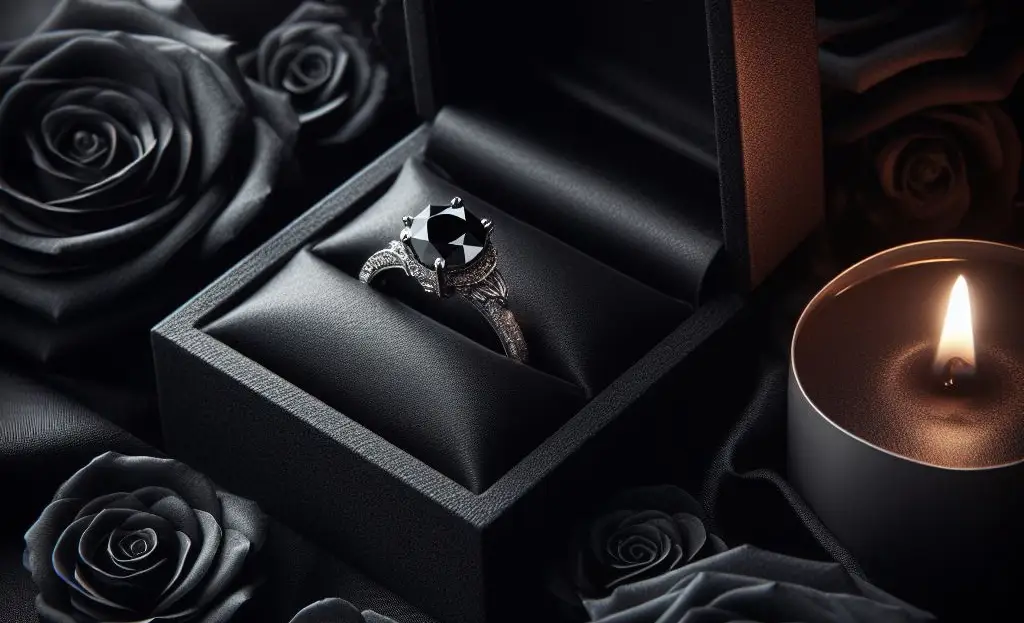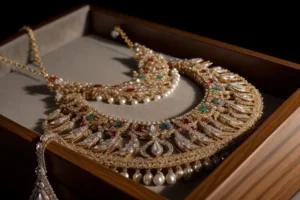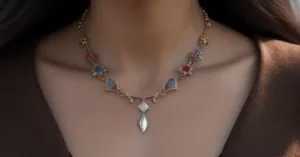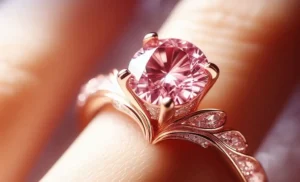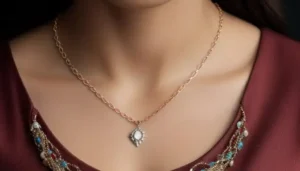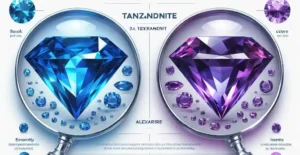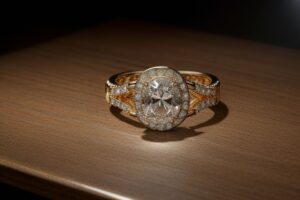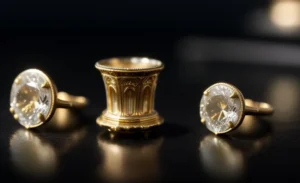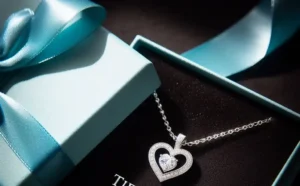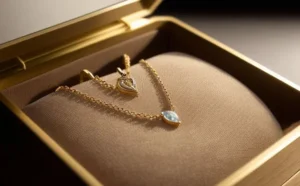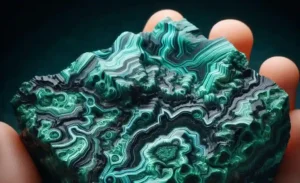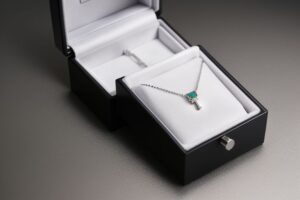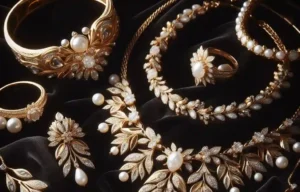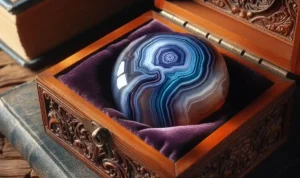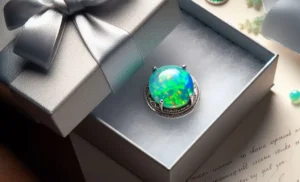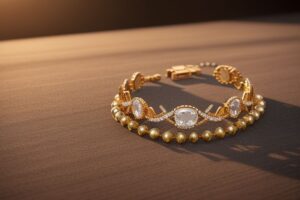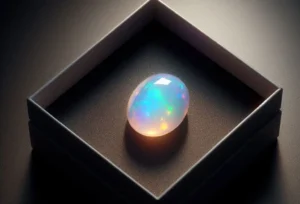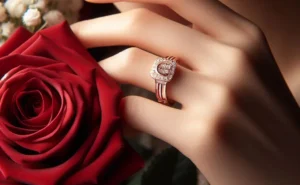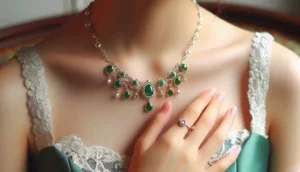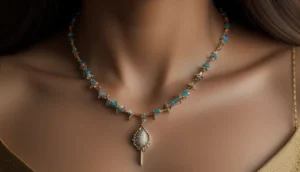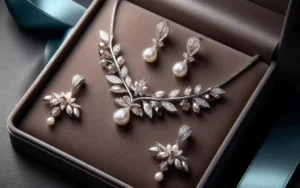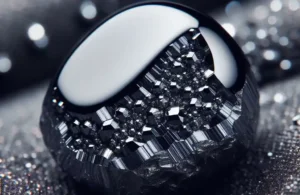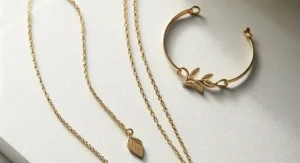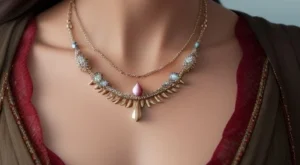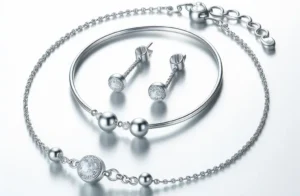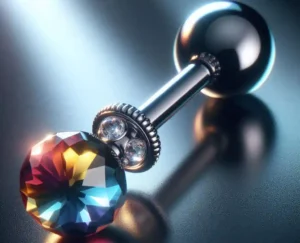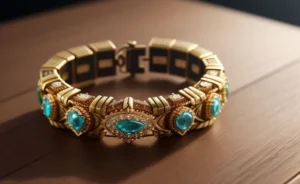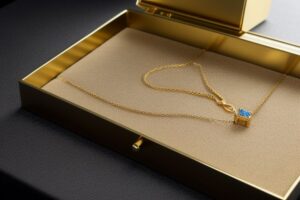Are Diamonds With Black Spots Cheaper? When shopping for diamonds, it’s not just the size or the cut that catches the eye but the clarity and color that often play a pivotal role in the decision-making process.
Among the various flaws that a diamond can possess, black spots are one of the most talked-about. But how do these imperfections impact the cost of these precious gems?
Let’s dive deep into the world of diamonds to uncover the effect of black spots on their value.
Are Diamonds With Black Spots Cheaper?

Yes, diamonds with black spots typically are cheaper than those without. The presence of black spots can significantly influence a diamond’s clarity grade, often resulting in the stone being classified within lower clarity categories such as Included (I1, I2, I3).
These grades indicate that the diamond contains visible inclusions, including black spots, which are apparent to the naked eye and can detract from the gem’s overall brilliance and appearance. Since the clarity grade is a crucial factor in determining a diamond’s value, those with lower grades due to black spots are priced more affordably.
This pricing adjustment reflects the impact of these inclusions on the diamond’s aesthetic appeal and the perception of its quality by potential buyers.
Therefore, individuals interested in larger or specific shapes of diamonds might find these more accessible in their budget range when considering stones with black spots.
Understanding Diamond Inclusions and Black Spots

In the intricate process of diamond formation, not all elements crystallize uniformly, leading to the creation of various inclusions that mark each stone’s unique identity. Among these, black spots stand out as a notable feature.
These spots are essentially concentrations of carbon that remained uncrystallized and got encapsulated within the diamond as it formed beneath the Earth’s surface. Their appearance can range from tiny specks barely discernible to the naked eye, to more noticeable blemishes that impact the gem’s clarity and, subsequently, its value.
Understanding the nature of these black spots is crucial for potential diamond buyers. These inclusions are not defects in the traditional sense but are natural outcomes of the diamond’s growth process. Their presence speaks to the complex conditions under which diamonds form, making each stone with a black spot or any inclusion a testament to the gem’s journey from deep within the Earth to the jewelry store.
The visibility of black spots can vary greatly. In some diamonds, these inclusions are hidden beneath the surface, posing little to no interference with the stone’s brilliance or fire. The impact on the gem’s appearance can be more pronounced in others, especially those where the black spot is near the surface or in a prominent location.
This variability plays a significant role in how gemologists assess and categorize each diamond, influencing its placement within the clarity grading scale.
For buyers intrigued by the story each diamond tells, understanding these nuances of inclusions like black spots is key. It allows for a deeper appreciation of the natural beauty and uniqueness that these features bring to each stone, beyond the conventional metrics of clarity and flawlessness.
The Impact of Black Spots on Diamond Clarity
Clarity is a critical factor in assessing a diamond’s quality and subsequently influences its valuation. The presence of black spots, essentially crystallized carbon not fully transformed during the diamond’s formation, constitutes a form of inclusion that affects this clarity.
These spots are more than just visual blemishes; they serve as identifiers of the diamond’s journey from deep within the Earth, offering a unique fingerprint that distinguishes each gem. However, from a grading perspective, black spots are significant.
Diamonds displaying conspicuous black spots are often placed into lower clarity categories, notably the Included (I1, I2, I3) segments, which denote a gem with noticeable inclusions obvious to the naked eye, affecting the stone’s overall appearance and brilliance.
The impact on the diamond’s clarity rating depends on several factors, including the size, number, and location of the black spots. For instance, a singular, tiny black spot might not dramatically diminish a diamond’s clarity if it’s situated in a less visible area or if it’s small enough to be masked by a skillful cut.
Conversely, diamonds marred by larger or multiple black spots, especially if these inclusions are centrally located or near the surface, suffer a more substantial decline in clarity. This degradation not only alters how light interacts with the diamond, diminishing its sparkle and fire but also reduces its appeal to consumers seeking perfection, thus affecting its market value.
The evaluation of these characteristics by certified gemologists is crucial in determining where a diamond falls on the clarity scale, guiding buyers in making informed decisions based on their preferences and budget.
How Black Spots Affect a Diamond’s Price
Diamonds characterized by the presence of black spots generally see a noticeable dip in market value compared to their more pristine counterparts. The degree of price reduction is directly tied to the clarity grade assigned to each diamond, which is influenced by the size, number, and visibility of these black spots.
Diamonds falling into lower clarity grades, such as the Included categories (I1, I2, I3), are typically priced more affordably due to these imperfections. This pricing structure opens the door for buyers to potentially select a larger or differently shaped diamond within the same budget constraints.
It’s important to note that not all black-spot-affected diamonds experience the same level of price adjustment. The impact on price is nuanced and can vary significantly based on the specific characteristics of each inclusion.
For instance, a diamond with a small, barely noticeable black spot may retain a higher value than one with a larger, more conspicuous spot. The exact price difference can range widely, reflecting the diverse nature of inclusions and their effect on a diamond’s appeal.
This variation underscores the complexity of diamond valuation and the need for prospective buyers to carefully evaluate how black spots might affect their potential purchase. While the presence of black spots undeniably influences price, the ultimate cost of a diamond is the result of a multifaceted assessment, incorporating not just clarity, but also factors like cut, color, and carat weight. Understanding how these elements interplay to determine a diamond’s price is essential for anyone looking to make an informed buying decision.
Can Black Spots Be Removed or Hidden?
The challenge of mitigating the visibility of black spots in diamonds requires a nuanced approach. While traditional methods such as laser drilling and fracture filling have been employed to address other types of inclusions, their effectiveness on black spots is limited.
Black spots, being solid carbon inclusions, do not respond as well to these treatments, which are better suited for reaching and altering or filling internal fractures or cavities.
However, not all hope is lost for those looking to minimize the impact of black spots on a diamond’s aesthetic. Jewelers often employ creative setting techniques to obscure these imperfections from view.
For instance, strategically placing the diamond in a setting where a prong or metal part of the jewelry covers the black spot can significantly reduce its visibility, making it a non-issue for the wearer.
Additionally, certain settings, like those featuring a halo of smaller diamonds around the main stone, can draw attention away from the inclusion, instead accentuating the diamond’s overall sparkle and appeal.
Another consideration is the choice of metal for the setting; darker metals can sometimes reduce the contrast between the black spot and the diamond, making the inclusion less noticeable.
The art of setting a diamond to hide or distract from black spots requires a skilled jeweler who understands how to balance the stone’s natural characteristics with the design of the jewelry to achieve the desired effect.
While these techniques do not remove the black spots, they offer practical solutions for enhancing the beauty of diamonds with such inclusions, allowing them to be celebrated for their unique charm rather than viewed solely through the lens of imperfection.
The Role of Personal Preferences in Diamond Selection
Choosing a diamond is a deeply personal decision, reflecting not just one’s taste but also their values and the stories they wish their jewelry to tell.
While the technical qualities of a diamond, such as its clarity, color, and cut, are significant, the final choice often hinges on individual preferences and the emotional connection one might feel towards a piece.
For some, the allure of a flawless gem is undeniable, symbolizing perfection and a classic beauty that is highly sought after. These diamonds are prized for their unmarred brilliance and are often the centerpiece of traditional engagement rings and heirloom pieces.
On the other hand, there is a growing appreciation for diamonds that carry unique identifiers, like black spots. These features, which might have been viewed as blemishes in the past, are increasingly celebrated for their uniqueness and the authenticity they bring to the stone.
A diamond with black spots carries with it a narrative of natural history and geological wonder, making it not just an adornment but a conversation piece.
For individuals drawn to the charm of these diamonds, the presence of black spots does not detract from the gem’s beauty but rather enhances it by showcasing its distinctive character. This perspective is gaining traction, especially among those who value originality and want their jewelry to reflect their personal story or a non-conventional beauty.
The decision to embrace diamonds with black spots is emblematic of a broader trend toward personalized and meaningful jewelry choices, where the emphasis is on the unique appeal and the special connection between the wearer and the piece, rather than traditional metrics of perfection.
Making an Informed Decision: Tips for Buyers
When contemplating the purchase of diamonds with black spots, it’s essential to engage in a thoughtful examination and consider several factors beyond the initial allure.
Utilize high-powered magnification tools to get a clear view of the black spots and assess how they might influence the diamond’s sparkle and overall aesthetic. It’s not just about spotting the inclusion but understanding its placement, size, and how it interacts with light.
A key aspect of this decision-making process is evaluating the trade-offs. A diamond with black spots may allow for a larger stone or a more desired cut within the same budget, providing an opportunity to prioritize what truly matters to you. However, it’s important to balance such advantages with how the inclusion might affect the diamond’s brilliance and visual appeal.
Consultation with a knowledgeable jeweler can offer invaluable insights. An expert can explain the nuances of how black spots affect a diamond’s clarity and overall value, helping to navigate through the array of choices. They can also suggest creative solutions to minimize the appearance of inclusions, such as specific setting styles or cuts that can draw attention away from imperfections.
In making your selection, consider how the diamond fits within the context of the jewelry piece it will become part of, and how it aligns with the wearer’s style and personality. Each diamond tells a story, and choosing one with black spots may resonate with those who appreciate the beauty in uniqueness and natural formation.
This process underscores the importance of personal preference in selecting a diamond that not only meets your aesthetic desires but also holds a deeper significance.
The Future of Diamonds with Black Spots in the Market
The trajectory of diamonds with black spots in the jewelry market is poised for an interesting evolution. As societal norms around beauty and perfection continue to evolve, there’s a burgeoning appreciation for the unique character that these diamonds bring to the table.
This shift in consumer sentiment is driving a more inclusive view of what is considered beautiful in gemstones, where the narrative and uniqueness of each piece can be as valuable as traditional measures of perfection.
The increasing demand for distinctive and meaningful jewelry is propelling diamonds with black spots from the shadows of obscurity into the spotlight of desirability. These diamonds offer an alternative to the conventional, showcasing nature’s diversity and the fascinating stories encapsulated within each stone.
As this trend gains momentum, it could significantly alter the market dynamics, with these diamonds achieving a status that celebrates their inherent uniqueness rather than viewing them as lesser alternatives to flawless stones.
In parallel, technological advancements are playing a crucial role in enhancing the appeal of diamonds with black spots. Innovations in treatment and cutting techniques are continually emerging, offering new ways to showcase these diamonds in the best light possible.
Future developments may further improve the ability to either minimize the visibility of black spots or creatively incorporate them into stunning designs that highlight their natural beauty.
As the narrative around diamonds continues to evolve, diamonds with black spots are finding their niche. They stand at the crossroads of tradition and modernity, offering a blend of authenticity, beauty, and personal significance that resonates with a growing number of buyers seeking something genuinely unique in their jewelry selections.

